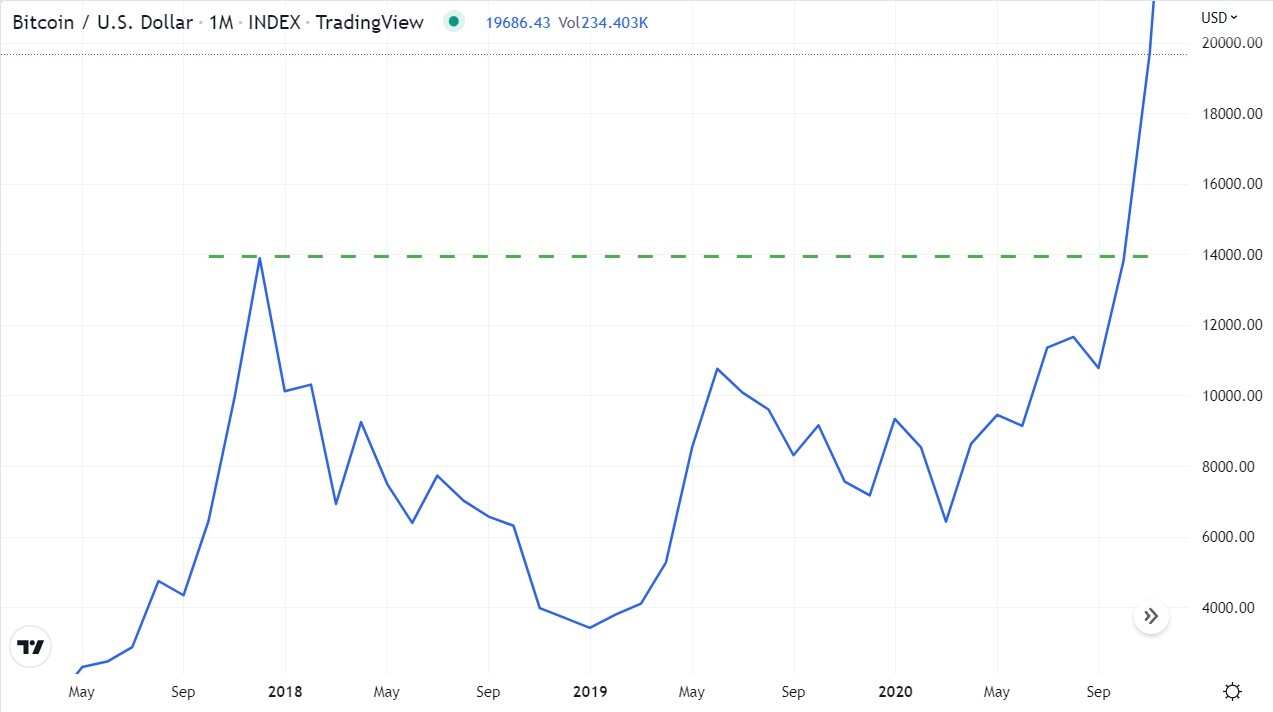What will the next Crypto Summer look like?
As we wait for the next bull run, we can piece together evidence to picture what the crypto summer might look like.


Before you know it, it’s already Q4 of 2022.
The prevailing theme for this year is global economic uncertainty, as powerful men and women across developed nations make decisions to raise the cost of borrowing and reduce energy distribution.
The effects of their decisions have negatively impacted markets across the world; the crypto market is no exception. Given the International Monetary Fund’s bleak outlook of next year’s global economic growth, it’s hard to say whether next year would be the year for crypto, and other risk assets, such as tech stocks.
But in this chilling crypto winter, we can try to imagine the warmer days ahead. While it’s pointless to ask when the next bull cycle will occur, we can definitely imagine what’s at store for the next “crypto summer“.
At best, this thinking could help us prepare for the inevitable recovery of the economy and the world’s financial markets. At the very least, this could also help us reduce our tendency to have tunnel vision and overthinking.
Let’s huddle, and imagine what the next crypto summer will look like.
When the ice thaws…
At the time of writing, the U.S. Dollar is the world’s reserve currency. This means, nearly everything that the U.S. central bank (aka “the Fed“) says and does would impact the financial markets.
“Monetary tightening” is one of the latest economic buzzwords, along with “inflation”. This is one of the actions that the Fed does to reduce the supply of U.S. dollar bills across the United States (and the rest of the world), in order to reduce the country’s inflation rate.
One way to tighten the U.S. dollar supply is by raising the Fed’s interest rate to discourage borrowing and encourage debt repayment, thus slowing down economic activities by discouraging investing and spending, and encouraging saving.
Alongside this action is what’s called a reverse repo agreement. This is a rare chance where the Fed would borrow cash from investors, normally hedge funds, pension funds, and financial institutions (those with deeper pockets).
In exchange, the Fed would offer government bonds (aka “Treasury bills”) and other “safe-haven securities” that generate a small amount of interest yield.
In other words, a huge amount of money that had gone into risk assets have now found themselves locked away, chilled and stored in the form of Treasury bills. How much exactly? As of August 2022, there is around $2.3 trillion dollars worth of Fed reverse repo — nearly at its all-time high.
…Crypto will spring
“There is a proverbial spring that’s ready to unload.”
Okay, why are you telling me this? What’s the implication?
According to one Cointelegraph writer, the $2.3 trillion dollars worth of Treasury bills and safe-haven assets are all short-term tax-free liquid assets. That means, the assets are readily exchanged back into cash at any time. The author believes that investors holding Fed securities wouldn’t want to hold onto these assets for too long.
“High inflation could eat up earnings from interest rates. So, in an ideal market situation, these investors are ready to buy [risk assets, like crypto]. There is a proverbial spring that’s ready to unload. ” (Pechman, 2022).
As for the question of when this economic rebound would occur is anyone’s guess. U.S. Federal Reserve Chairman Jerome Powell had “strongly committed” to aggressively bring down the inflation rate until the target of 2.5%. (The currently estimated U.S. inflation rate is 8.5%, reported in September).
However, notable figures in the financial space have made some “rough estimates”. Former Goldman Sachs financier Anthony Scaramucci believes that the global economy may recover within 6 to 12 months, taking note that the inflation rate is reducing faster than expected. One of Solana’s creators, Anatoly Yakovenko told Decrypt that the current crypto bear market could last between 12 and 18 months.
But what does the historical price chart say? Let’s assume that the next bull cycle will occur when bitcoin’s price exceeds its previous all-time high. This measure is the easiest one to make, as we ignore other factors that influence the profitability of bitcoin investors.
If we solely look at the price chart, we can see that the 2018 bear market ended after nearly 3 years. To put that into perspective, 2013 bear market ended in almost 3 and a half years (not shown). Stretching back to 2011, we see that bitcoin reached a new all-time high after 1.5 years in the bear market.

Some investors wait shorter
Based on historical data, Bitcoin investors who bought near the price peak would have had to wait around 2-4 years before seeing their investment at break-even point.
However, those who had invested consistently would have an easier time waiting for their investment to break-even. They could even make a profit before the next bull cycle became apparent.
This is because of the average down effect. Those who could continue to fund their bitcoin investment during the bear market could buy at lower and lower prices. This brings down the average buying price further.
When the bitcoin price creeps ever slightly closer to the investor’s average buying price, the net investment loss will decrease. By some luck, if the bitcoin price is exactly at the average buying price, the investor would have reached break-even point.
The takeaways
While we can never know exactly when the crypto market will recover to previous price levels, we have evidence to suggest that at that point in time, prices may surge. This is in part due to a great volume of liquidity that has been set aside by investors.
Currently in the United States, the liquid assets take the form of Fed securities. The case may be similar in countries where central banks made the decision to increase their interest rates.
However, currently the US dollar is a global reserve currency, which means the circulation activity and liquidity of the US dollar matters a lot for the world’s major financial market.
Share to
Stay curious and informed
Your info will be handled according to our Privacy Policy.
Make sure to follow our Facebook, Twitter, Instagram, and YouTube channel to stay up-to-date with Easy Crypto!
Also, don’t forget to subscribe to our monthly newsletter to have the latest crypto insights, news, and updates delivered to our inbox.
Disclaimer: Information is current as at the date of publication. This is general information only and is not intended to be advice. Crypto is volatile, carries risk and the value can go up and down. Past performance is not an indicator of future returns. Please do your own research.
Last updated November 18, 2022





